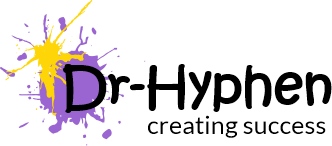Becoming a Clinical UX Designer after working as a doctor is no easy feat. I’m obviously not afraid of learning loads until the wee hours of the morning and sitting exams, but that was whilst I was a teenager. Then it became life long learning as I wanted to have enough knowledge so I could best serve my patients.
Now, life long learning involves between subject experiments, design thinking and low-high fidelity prototyping. I have a number of ways to get all that information in to my head; university, going to events, talking to UX Experts, etc. Yet nothing is more effective than picking up a good book and giving it a read. Or in my case, a Kindle Fire 7.
Here’s my top 5 books I think all UX Designers should read.
 1) Web Form Design: Filling in the Blanks
1) Web Form Design: Filling in the Blanks
by Luke Wroblewski
Available on Amazon Kindle £13.19, and Paperback for a lot more…
This book was recommended to me by Alexander Baxevanis, Client Director at Webcredible. I was doing a job that involved designing loads of form for clinical staff to record data or make requests for their patients, such as blood tests or radiology scans. It was important that these forms were simple and easy to use. If any members of staff made mistakes, it could lead to delays or even harm to patients. So no pressure! Wroblewski broke everything down in to very manageable chunks to make it quick to put his design recommendations in to practice, and have evidence for why you are doing it. Although it is called Web Form Design, it is extremely applicable to form design in general.
A great book for beginners or more experienced practitioners who may feel a little rusty on form design
 2) The Design of Everyday Things -Revised and Expanded Edition
2) The Design of Everyday Things -Revised and Expanded Edition
by Don Norman
Available on Amazon Kindle for £7.59, and Paperback for a lot more…
If you want to be a UX ANYTHING and have never heard of this book, nor know of Don Norman, then get this book. Seriously, go and get it, and read it immediately. He tells you in the first chapter that no one should ever feel stupid for getting confused with using a door, and he is right. Someone designed that door to be that way, and if they read his book first, maybe the door would have been designed better!
Seriously though, this is great reading for an entry level UX practitioner, and anyone who is interested in seeing the world from a new perspective. I particularly felt empowered as someone who can make the world a better place simply by designing things better and not accepting bad design.
Thank you Don Norman
 3) Emotional Design: Why We Love (or Hate) Everyday Things
3) Emotional Design: Why We Love (or Hate) Everyday Things
by Don Norman
Available on Amazon Kindle for £7.59, and Paperback for a few quid more.
Another Don Norman classic. This one talks about the importance of emotions in the decision making process and how understanding human emotions can maximise the impact our products and services have on customers and users.
It also discusses artificial intelligence, and why machines eventually need to have emotions if they are ever to truly work with us to make the lives of all easier and more efficient. This was a slightly challenging concept for me, especially since I wasn’t expecting it. But in the end, it has made be a much better UX Designer.
Emotions matter.
 4) Steal Like An Artist: 10 Things Nobody Told You About Being Creative
4) Steal Like An Artist: 10 Things Nobody Told You About Being Creative
by Austin Kleon
Available on Amazon Kindle for £6.64, and Paperback for £7.99
A short and sweet book which everyone, regardless of profession, can benefit from, Kleon’s Steal Like An Artist opened by eyes to the creative process and how we learn from the world around us. What I love about this book is that he beautifully explains how being creative can benefit every aspect of your life. Taking ideas from everything around you and putting it in to your own work with your own stamp on it. This is how ordinary people become leaders and experts in their fields. They don’t just lean on their own understanding, they learn from others. They steal like an artist!
 5) Show Your Work!: 10 Ways to Share Your Creativity and Get Discovered
5) Show Your Work!: 10 Ways to Share Your Creativity and Get Discovered
by Austin Kleon
Available on Amazon Kindle for £5.98, and Paperback for £8.99
In one of my other posts, I explain the importance of being part of a community, specifically the UX community. This booked built on that foundation belief and took it to the next level. The is incredible power in just putting yourself out there, no matter where you are on your career ladder. We all have something to learn, but we also all have something to offer others. And now, I try and share my experiences with as many people as possible.
Of course, there are other books which have been incredibly useful which are worth a mention.
Get Started in UX: The Complete Guide to Launching a Career in User Experience Design by Matthew Magain and Luke Chambers helped me better understand where I fit in the industry and get a idea of where I could go. UX Mastery, who made this book, is very useful online resource too..
Logo Design Love: A guide to creating iconic brand identities by David Airey helped me up my logo design skills.
The Non-Designer’s Design Book 3rd Edition by Robin Williams has taken by graphic design skills to the next level, allowing me to provide competent visual design skills to my projects.
Undercover User Experience Design by Cennydd Bowles and James Box has given me strategies to weave UX skills and knowledge in to big organisations, which is easier said than done, but not impossible.
And finally, Lean UX: Applying Lean Principles to Improve User Experience by Jeff Gothelf and Josh Seiden (editor), further developed my understanding of how to make the product and software development in large organisations more user centric, but also have UX designers keep up with the pace set by Agile development teams.
Hopefully my list will benefit other UX folk. There are certainly more books that will help develop one’s UX skills, but I think this is a useful start.
Please do get in touch if you are thinking about starting a career in UX. It was certainly one of the best decisions I made.
Thanks for reading.


0 Comments